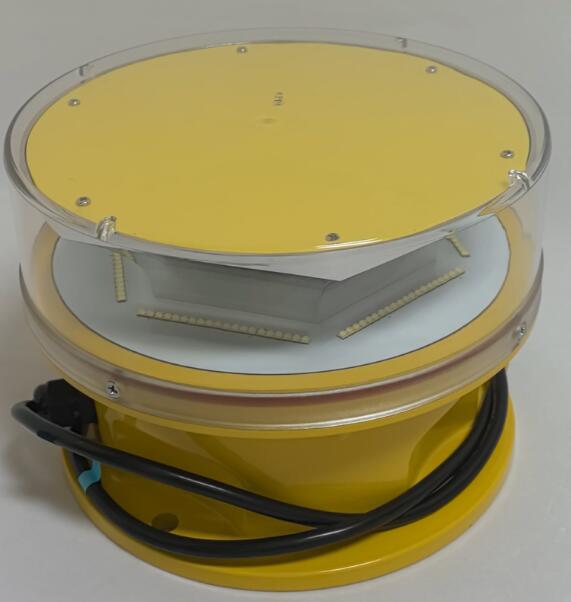Illuminating Safety: The Critical Role of Aviation Lights on Buildings
As urban landscapes continue to expand vertically, the need for aviation lights on buildings has become increasingly vital. These specialized lights serve as essential visual markers for aircraft, ensuring safe navigation around tall structures, especially during nighttime or low-visibility conditions. This article explores the importance, types, regulations, and technological advancements of aviation lights on buildings, highlighting their role in modern aviation safety.
Why Aviation Lights on Buildings Are Essential
With skyscrapers and high-rise structures dominating city skylines, the risk of aerial collisions has grown. Aviation lights on buildings mitigate this risk by:
Preventing Mid-Air and Ground Collisions – By marking tall buildings, these lights help pilots identify obstacles, reducing the likelihood of accidents.

Complying with Aviation Regulations – International and national aviation authorities mandate the installation of warning lights on structures above certain heights.
Enhancing Visibility in Poor Weather – Fog, heavy rain, and darkness can obscure buildings; aviation lights ensure they remain visible to pilots.
Protecting Infrastructure and Human Lives – Properly lit buildings minimize the risk of aircraft strikes, safeguarding both property and lives.
Types of Aviation Lights on Buildings
Different buildings require different lighting solutions based on height, location, and aviation authority requirements:
| aviation lights on buildings |
1. Low-Intensity Aviation Lights (L-810)
Used for buildings under 45 meters (148 feet).
Typically steady red lights.
Common on medium-rise structures near airports.
2. Medium-Intensity Aviation Lights (L-864/L-865)
Required for buildings between 45–150 meters (148–492 feet).
L-864: Red flashing or steady lights.
L-865: White flashing lights for better daytime visibility.
3. High-Intensity Aviation Lights (L-856/L-857)
Mandatory for buildings exceeding 150 meters (492 feet).
Bright white strobes visible from long distances.
Used on skyscrapers, telecommunication towers, and other super-tall structures.
4. Dual Lighting Systems
Combine red lights (daytime) and white strobes (nighttime).
Ensures optimal visibility under all conditions.
Regulations Governing Aviation Lights on Buildings
To maintain aviation safety, strict guidelines dictate the installation of aviation lights on buildings:
FAA (Federal Aviation Administration) – Specifies lighting standards in Advisory Circular (AC) 70/7460-1L.
ICAO (International Civil Aviation Organization) – Defines global standards in Annex 14.
EASA (European Union Aviation Safety Agency) – Regulates lighting in European airspace.
Local Aviation Authorities – Many countries enforce additional rules based on regional air traffic density.
Non-compliance can result in penalties and increased risks for aircraft operations.
Technological Advancements in Aviation Lighting
Modern aviation lights on buildings incorporate cutting-edge innovations:
LED Technology – Energy-efficient, long-lasting, and highly visible.
Solar-Powered Systems – Ideal for sustainable installations in urban environments.
Smart Monitoring & Remote Control – Real-time diagnostics and automated alerts for maintenance.
Aircraft Detection Lighting Systems (ADLS) – Activates lights only when aircraft are nearby, reducing light pollution.
Challenges and Future Trends
Despite their importance, aviation lights on buildings face challenges:
Light Pollution Concerns – Bright strobes can affect urban residents; ADLS and directional lighting help mitigate this.
| aviation lights on buildings |
Maintenance in High-Rise Structures – Accessing lights on skyscrapers requires specialized equipment.
Weather Durability – Must withstand extreme conditions, including storms and high winds.
Future Innovations
AI-Powered Adaptive Lighting – Adjusts brightness based on real-time air traffic.
Integration with Smart City Systems – Synchronizes with urban air mobility (UAM) and drone corridors.
Enhanced Sustainability – More solar and low-energy lighting solutions.
Aviation lights on buildings are indispensable for modern aviation safety, ensuring that tall structures remain visible to pilots at all times. With evolving technologies and stricter regulations, these lighting systems continue to improve, enhancing both safety and efficiency in urban airspace. As cities grow taller and air traffic increases, the role of aviation lights on buildings will only become more critical in safeguarding the skies.
